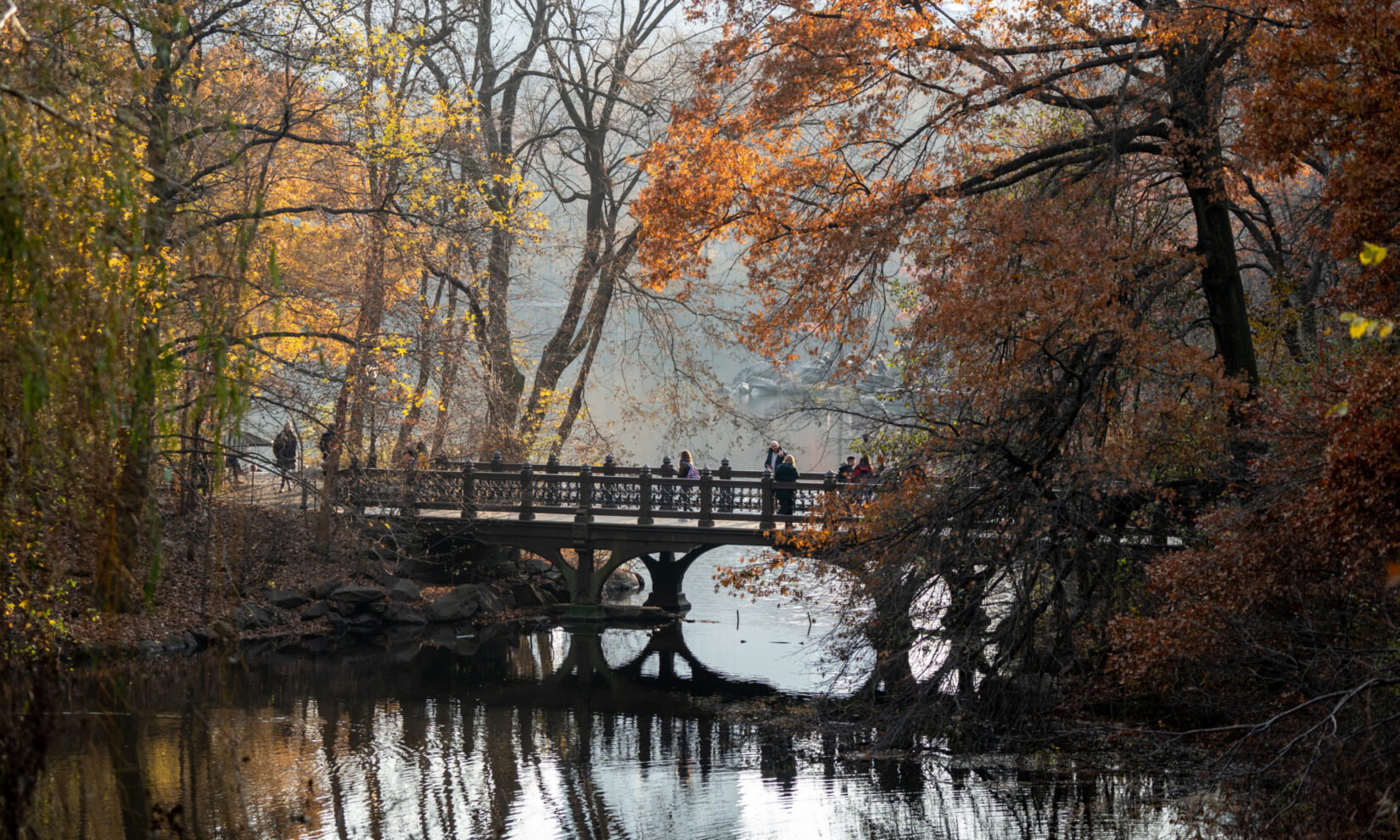Oak Bridge

Spanning the mouth of Back Rock Bay at the northernmost tip of the Lake, Oak Bridge is an ideal spot to enjoy the surrounding scenery—including some of the most dramatic views of the midtown skyline.
Like Bow Bridge, it was designed as one of the major entrances to the Ramble and a focal point in the landscape. It’s also a popular destination for birdwatchers.
The bridge that exists today is a reconstruction of the original, which was built almost entirely in white oak and prone to deterioration as a result. In the early 20th century, it was removed and replaced with a simpler footbridge.
In 2009, as part of the Central Park Conservancy’s comprehensive restoration of the Lake, the bridge was rebuilt based on the original but used more modern and durable materials such as steel and cast aluminum; railings and decking were rebuilt in white oak to create a connection to the original construction of the bridge.
Then & Now: Oak Bridge in Central Park
Central Park’s arches and bridges are an integral part of its circulation system. The Park’s designers, Frederick Law Olmsted and Calvert Vaux, created an intricate system of pedestrian paths, a bridle path, and carriage drives to allow visitors to experience the Park’s landscapes in a variety of ways. However, for this system to work safely and in a relatively small space, it had to limit interactions between potentially conflicting forms of traffic. The Park’s arches and bridges separate this traffic by carrying one form of transportation over another.
Between 1859 and 1866, 27 arches and bridges were built in Central Park. All were designed by Vaux—in some cases with the assistance of fellow architect Jacob Wrey Mould. Each one is unique, designed with various materials and decorative motifs and with careful consideration of its placement in the landscape. Over time, six arches and bridges were added and three were removed, bringing the total to 30 ornamental bridges and arches in the Park today. There are also additional bridges in the Park’s woodlands that are smaller, constructed with wood, and typically cross over streams.
Another key part of this circulation system are the transverse roads that allow City traffic to cross the Park. The transverse roads are sunken below the grade of the Park with bridges crossing over them. These bridges were designed as more utilitarian structures and weren’t intended to be seen—but they allow pedestrians and other traffic to seamlessly move through the Park. There are 13 transverse road bridges (one of which, Denesmouth, is also considered an ornamental bridge).

Give Back to the Park
Arches and bridges support every visitor’s journey through Central Park. You can support these integral structures by helping the Conservancy maintain them and the landscapes they hold.
